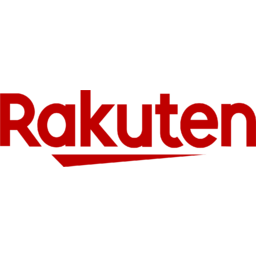
P/E ratio for Rakuten (4755.T)
P/E ratio as of June 2025 (TTM): -8.52
According to Rakuten's latest financial reports and stock price the company's current price-to-earnings ratio (TTM) is -8.52065. At the end of 2024 the company had a P/E ratio of -11.4.
P/E ratio history for Rakuten from 2010 to 2024
PE ratio at the end of each year
| Year | P/E ratio | Change |
|---|---|---|
| 2024 | -11.4 | 220.66% |
| 2023 | -3.54 | 41.31% |
| 2022 | -2.51 | -80.96% |
| 2021 | -13.2 | 11.3% |
| 2020 | -11.8 | -70.2% |
| 2019 | -39.7 | -668.73% |
| 2018 | 6.98 | -45.89% |
| 2017 | 12.9 | -69.64% |
| 2016 | 42.5 | -2.09% |
| 2015 | 43.4 | 37.91% |
| 2014 | 31.5 | -34.41% |
| 2013 | 48.0 | 10.97% |
| 2012 | 43.2 | -135.45% |
| 2011 | -122 | -578.14% |
| 2010 | 25.5 | 47.62% |
| 2009 | 17.3 | -227.41% |
| 2008 | -13.6 | -169.67% |
| 2007 | 19.5 | -92.56% |
| 2006 | 262 | 277.13% |
| 2005 | 69.4 | -839.05% |
| 2004 | -9.39 |
How to read a P/E ratio?
The Price/Earnings ratio measures the relationship between a company's stock price and its earnings per share. A low but positive P/E ratio stands for a company that is generating high earnings compared to its current valuation and might be undervalued. A company with a high negative (near 0) P/E ratio stands for a company that is generating heavy losses compared to its current valuation.
Companies with a P/E ratio over 30 or a negative one are generaly seen as "growth stocks" meaning that investors typically expect the company to grow or to become profitable in the future.
Companies with a positive P/E ratio bellow 10 are generally seen as "value stocks" meaning that the company is already very profitable and unlikely to strong growth in the future.